
In reviewing cosmetic surgery options such as the Fat Transfer to Buttocks or Brazilian Butt Lift, the initial question that comes to mind is always, “What’s the cost?” The Cost of a Fat Transfer to the buttocks can vary considerably depending on the state and city in the US.
The average cost of a Fat Transfer to the Buttocks in the United States varies from $8,000 to $18,000. The above range covers most procedures and should give an estimate of what to expect. However, I would like to point out that there may be substantial variation depending on your location.
In larger cities such as New York or Los Angeles, for instance, the cost of the Fat Transfer to Buttocks procedure may be much higher due to factors like high demand and surgeons’ specialized knowledge in these regions. As such, it should not come as a surprise that the average cost of such a procedure may be higher than the average.
In the end, the Cost of a Fat Transfer to the Buttocks in the US may vary depending on the state and location where it is performed. The ideal approach would be to consult a board-certified Cosmetic Surgeon to discuss the details.
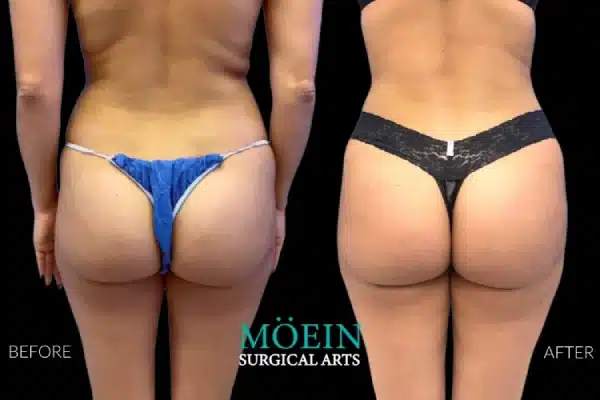
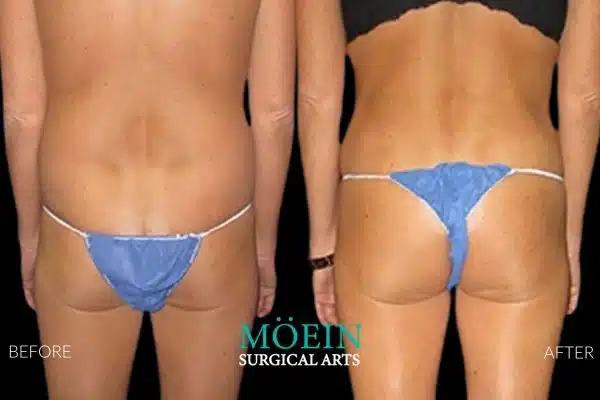
When considering a fat transfer procedure, it is important to understand the factors that contribute to the overall cost. Determining the cost of fat transfer involves several factors essential to both the patient and the surgeon. By exploring the factors that influence fat transfer cost, individuals can better understand the financial aspects of the procedure and make informed decisions regarding their cosmetic goals.
Los Angeles Average Pricing 2025
| Cost Component | Average Range | Dr. Moein’s Office | Details |
|---|---|---|---|
| Surgeon’s Fee | $6,000 – $12,000 | Competitive | Fat harvesting + expert transfer technique |
| Anesthesia Fee | $1,500 – $2,500 | Included | Board-certified anesthesiologist |
| Facility/OR Fee | $2,000 – $4,000 | Included | Accredited surgical center |
| Liposuction Areas | $1,500 – $3,000 per area | 2-3 areas incl. | Abdomen, flanks, back, thighs |
| Compression Garments | $150 – $350 | Included | Medical-grade post-op garments |
| Pre-Op Lab Tests | $300 – $500 | Variable | Blood work & medical clearance |
| Post-Op Medications | $100 – $250 | Included | Pain meds & antibiotics |
| Follow-up Visits | $0 – $500 | 1 Year Free | Post-op care & monitoring |
| TOTAL COST RANGE | $12,000 – $25,000 LA Average | $10,000 – $18,000 All-Inclusive Package | *Prices vary based on individual needs |
Schedule a free consultation with Dr. Moein to discuss your goals and receive an accurate cost estimate.
📞 Call (310) 455-8020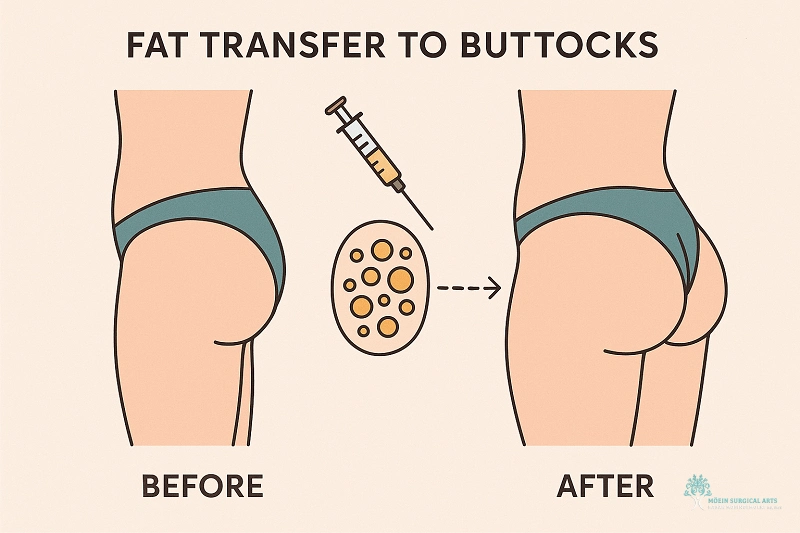
The Volume of Fat Transferred in Fat Transfer Procedures
Fat transfer procedures have gained popularity in recent years as a way to enhance various areas of the body. One of the key factors to consider in fat transfer procedures is the volume of fat that is transferred to achieve the desired results.
Body fat can be used as a soft tissue filler material in fat transfer procedures to create larger increases in volume. This is particularly beneficial when enhancing the breasts and buttocks, as these areas often require a significant increase in size to achieve the desired aesthetic.
One of the advantages of using body fat as a filler material is that it provides longer-lasting results compared to synthetic fillers. The body fat that is transferred becomes incorporated into the existing tissues of the body, allowing for a more natural and sustainable augmentation. Additionally, using body fat as a filler material eliminates the risk of allergic reactions or rejection that can occur with synthetic fillers.
In conclusion, the volume of fat transferred plays a crucial role in fat transfer procedures. Body fat serves as an ideal soft tissue filler material, allowing for larger increases in volume when enhancing the breasts and buttocks. The use of body fat also provides advantages over synthetic fillers, including longer-lasting results and reduced risk of complications.
The cost of liposuction can vary depending on several factors, including the amount of liposuction performed. The amount of liposuction is determined by the number of areas being treated and the type of liposuction technique used.
Liposuction techniques can include traditional liposuction, which involves using a cannula to suction out fat, or newer techniques such as laser-assisted or ultrasound-assisted liposuction. The type of technique used can affect the cost of the procedure.
The number of areas being treated is another factor that can affect the cost of liposuction. Treating multiple areas may result in a higher cost as more work and time will be involved.
However, some surgeons may offer discounts or cost reductions for treating multiple areas or for combining liposuction with other procedures. For example, if a patient wants to have liposuction on their abdomen and thighs, they may be able to receive a discounted rate for treating both areas. Combining procedures, such as liposuction and a tummy tuck, can also result in cost savings.
In conclusion, the cost of liposuction is determined by the amount of liposuction performed, which is influenced by the number of areas treated and the type of liposuction technique used. Potential discounts or cost reductions may be available for treating multiple areas or combining procedures.
If buttock implant removal is needed, there are several important steps and considerations. First, a skilled surgeon must assess the patient’s individual case and determine the best approach for removal. This may involve making an incision and carefully extracting the implants without causing damage to the surrounding tissues.
During the extraction process, the surgeon must exercise extreme caution to avoid potential complications. The implants are typically located within the gluteal muscles, which are delicate and prone to injury. A skilled surgeon will carefully remove the implants, taking care not to disrupt the surrounding tissues, nerves, or blood vessels.
There are potential risks and complications associated with buttock implant removal surgery. These can include bleeding, infection, changes in sensation, scarring, and asymmetry. The recovery process will vary depending on the individual, but typically involves a period of rest and avoiding strenuous activity. Post-operative care may include pain management, monitoring for infections, and follow-up appointments with the surgeon to ensure proper healing. It is important for patients to closely follow the surgeon’s instructions and attend all post-operative appointments to ensure the best possible outcome.
In conclusion, buttock implant removal surgery requires the expertise of a skilled surgeon to safely extract the implants without causing harm to the surrounding tissues. The recovery process may involve potential risks and complications, but with proper post-operative care and follow-up appointments, patients can achieve successful outcomes.
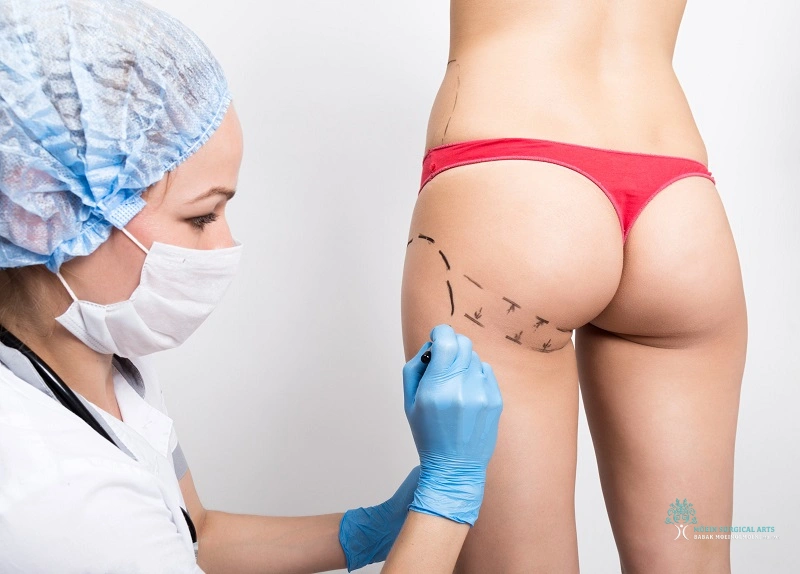
Buttock tuck surgery, also known as a gluteal lift or buttock lift, may be indicated for individuals who have loose or sagging skin in the buttock area. This can be a result of aging, significant weight loss, or genetics. The procedure aims to improve the shape and contour of the buttocks by removing excess skin and tightening the underlying tissues.
The procedure begins with the administration of anesthesia, usually general anesthesia, to ensure the patient’s comfort during the surgery. The surgeon then makes incisions in strategic locations, typically along the bikini line, extending towards the sides and lower back. The excess skin is carefully trimmed away, and the remaining skin is pulled upward and sutured together for a tighter appearance. In some cases, liposuction may also be performed to remove excess fat and achieve a more sculpted look.
The potential benefits of buttock tuck surgery include enhanced buttock shape and firmness, improved self-confidence, and the ability to fit into clothing more comfortably. However, it is essential to be aware of the potential risks and complications associated with this procedure. These may include bleeding, infection, scarring, asymmetry, changes in sensation, and poor wound healing.
Buttock tuck surgery differs from buttock enhancement procedures such as fat grafting or implants. While buttock enhancement procedures aim to increase the volume and projection of the buttocks, buttock tuck surgery primarily focuses on removing excess skin and improving the overall shape.
Common techniques used in buttock tuck surgery include the traditional lower body lift, the upper buttock lift, or a combination of both. The expected recovery time after buttock tuck surgery may vary, but typically patients can return to work and normal activities within 2-3 weeks. Post-operative care may involve wearing compression garments, taking prescribed pain medication, and following a specific diet to aid in the healing process.
In conclusion, buttock tuck surgery may be a suitable option for individuals with loose or sagging skin in the buttock area. It aims to improve the shape and contour of the buttocks by removing excess skin and tightening the underlying tissues. However, potential risks and complications should be carefully considered before undergoing this procedure.

Introduction: The cost of a Brazilian butt lift is determined by several factors and typically includes multiple components. This popular cosmetic procedure involves enhancing the shape and size of the buttocks through fat grafting, commonly referred to as a “fat transfer.” The overall cost varies depending on various factors, such as the surgeon’s experience and reputation, the geographical location of the clinic, the extent of the procedure, and additional expenses associated with pre-operative and post-operative care. Understanding what the cost of a Brazilian butt lift includes is crucial for prospective patients to make informed decisions and have realistic expectations.
Surgeon’s fee for fat harvest and transfer is an important consideration when planning for this cosmetic procedure. The cost of the surgeon’s fee can vary depending on several factors.
Firstly, the complexity of the procedure plays a significant role in determining the cost. More complex surgeries that require a higher level of skill and expertise will generally have a higher surgeon’s fee. This is because these procedures often involve more time and effort from the surgeon.
The experience and expertise of the surgeon also contribute to the cost. Surgeons who have been practicing for many years and have a proven track record of successful surgeries tend to charge higher fees. Their expertise and reputation justify the higher cost.
Additionally, the location of the clinic can influence the surgeon’s fee. Clinics located in major cities or prestigious areas may charge more due to higher overhead costs.
Apart from the surgeon’s fee, there may be additional costs involved. These can include anesthesia fees, as well as facility fees for using the surgery center.
To help make the procedure more affordable, potential financing options may be available. Patients can explore options such as medical credit cards, installment plans, or financing arrangements with the clinic or a third-party provider.
In conclusion, the surgeon’s fee for fat harvest and transfer can vary depending on the complexity of the procedure, the experience and expertise of the surgeon, and the location of the clinic. Additional costs such as anesthesia fees and facility fees may also be involved. Exploring financing options can help make the procedure more accessible to those seeking it.
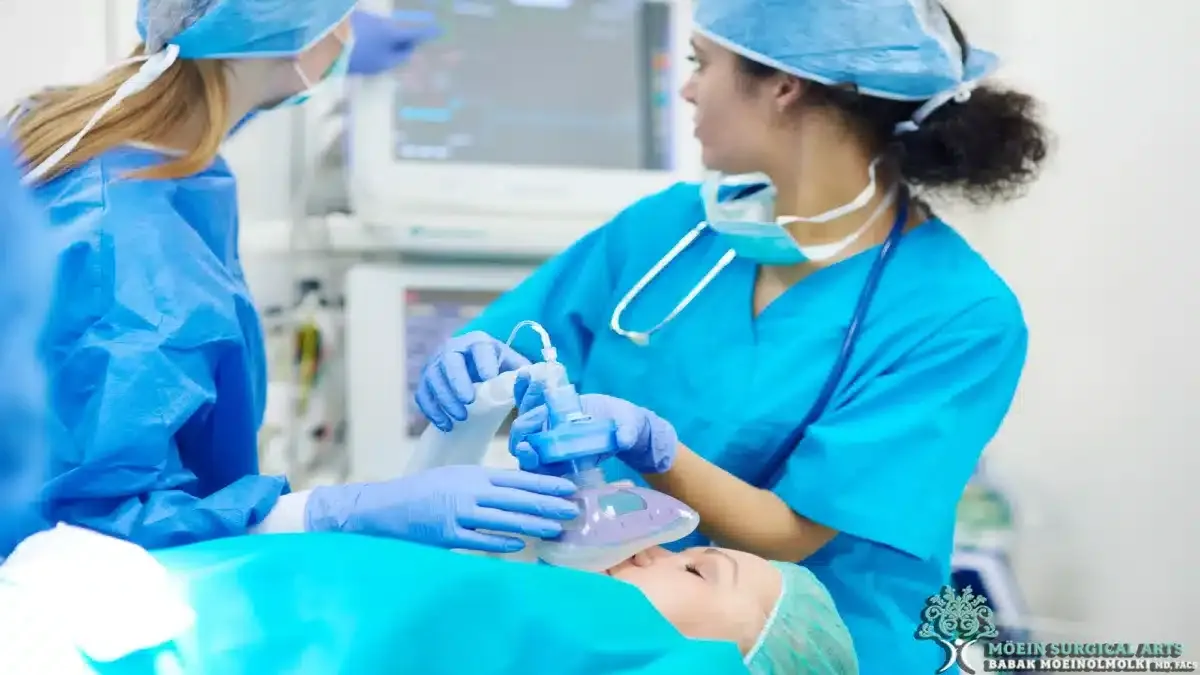
An anesthesiologist plays a crucial role in surgery by ensuring the patient’s safety and comfort during the procedure. Their expertise in administering anesthesia and monitoring the patient’s vital signs is essential for a successful surgery. As a result, an anesthesiologist fee is necessary to cover their specialized skills and services.
One procedure where the use of an anesthesiologist and general anesthesia is often required is traditional liposuction. This cosmetic surgery involves the removal of excess fat through suction, typically performed under general anesthesia. General anesthesia allows the patient to be completely unconscious and pain-free during the procedure. The anesthesiologist carefully administers the anesthesia, ensuring the patient’s comfort and safety throughout the surgery. They monitor the patient’s vital signs such as heart rate, blood pressure, and oxygen levels, making adjustments as needed to maintain stability.
The importance of an anesthesiologist cannot be overstated. Their presence significantly reduces the risks associated with surgery and ensures the patient’s well-being. Their expertise and specialized training allow them to anticipate potential complications and act quickly to mitigate them. While the anesthesiologist fee may add to the overall cost of a surgical procedure, its value lies in the specialized care, attention, and expertise provided by these medical professionals.
In conclusion, an anesthesiologist fee is necessary to cover the role and importance of an anesthesiologist during surgery. The use of general anesthesia, as required in traditional liposuction and other procedures, highlights the importance of the anesthesiologist in ensuring patient comfort and safety. Their expertise and vigilance throughout the surgery significantly contribute to the overall success and positive outcomes of surgical procedures.
The facility fee for a surgical operation refers to the cost associated with the use of the medical facility where the surgery is performed. The fee is typically separate from the fees charged by the surgeon and anesthesiologist. It covers the expenses related to the use of the operating room, recovery room, nursing staff, and any necessary equipment or supplies.
One significant factor that contributes to the cost difference between having surgery in a hospital and an outpatient clinic is the overhead expenses. Hospitals have larger facilities with higher operating costs, including maintenance, utilities, and staffing. These costs are spread out across all services offered by the hospital, including surgeries. On the other hand, outpatient clinics are typically smaller and have lower overhead expenses, resulting in lower facility fees for patients.
Another factor that affects the variation in facility fees is the level of care required. Some surgeries may necessitate a higher level of medical and nursing staff, specialized equipment, and longer recovery times, which may increase the facility fee. Additionally, surgeries performed in hospitals often involve more complex cases or require specialized resources, leading to higher fees compared to procedures that can be performed in outpatient clinics.
To sum up, the facility fee for a surgical operation is influenced by various factors, including the surgery location (hospital or outpatient clinic) and the specific requirements of the procedure. Patients should consult with their healthcare provider or insurance company to understand the cost difference and factors contributing to the variation in facility fees.

The Brazilian butt lift has become an increasingly popular cosmetic procedure in recent years. It involves removing excess fat from certain areas of the body through liposuction and then transferring that fat to the buttocks, giving them a fuller and more lifted appearance. As with any elective surgery, cost is an important consideration for those contemplating a Brazilian butt lift. However, it is essential to note that the cost can vary significantly across the United States.
In this article, we will explore the average cost of a Brazilian butt lift in different regions of the country, taking into account factors that may influence the overall price such as the surgeon’s experience, the location of the clinic, and additional fees associated with the procedure. By understanding the costs involved, individuals interested in a Brazilian butt lift can make informed decisions about their options and budget accordingly.
The average cost of a Brazilian Butt Lift (BBL) can vary from city to city and state to state within the United States. In New York, NY, the average surgeon’s cost of a BBL ranges from $8,000 to $15,000. In Chicago, IL, the average cost ranges from $6,000 to $12,000. In Miami, FL, the average cost ranges from $5,000 to $10,000. In Birmingham, AL, the average cost ranges from $5,000 to $8,000. Finally, in Austin, TX, the average cost ranges from $6,000 to $10,000.
These prices are subject to change depending on various factors such as the surgeon’s experience, the clinic’s reputation, and the complexity of the procedure. It is important to note that these prices may only cover the surgeon’s fees and do not include anesthesia, facility fees, or additional costs associated with the surgery.
It is crucial to consult with a board-certified Cosmetic Surgeon like Dr. moein in Los Angeles to determine an accurate cost estimate based on your specific needs and expectations. It is also recommended to research multiple surgeons and clinics in each city to compare prices and ensure a safe and successful BBL procedure.
In conclusion, the cost of a fat transfer to the buttocks is influenced by various factors such as the location of the procedure and the surgeon chosen. The cost can vary significantly between different countries, including the United States, India, Spain, Turkey, and Hungary.
The location of the procedure plays a significant role in determining the cost. For example, the cost of a fat transfer in the United States tends to be higher compared to countries like India, Spain, Turkey, and Hungary. This is primarily due to higher healthcare costs and overhead expenses in the United States.
Additionally, the surgeon chosen can also influence the cost of the procedure. Highly experienced and reputed surgeons may charge higher fees for their services compared to less well-known surgeons. However, it is important to prioritize the skills and qualifications of the surgeon over cost as a fat transfer is a delicate procedure that requires expertise and precision.
Finding a reputable practice and surgeon is of utmost importance for a fat transfer procedure. It ensures that the procedure is performed safely and efficiently, reducing the risk of complications. Moreover, reputable practices and surgeons have a proven track record of delivering successful results, ensuring patient satisfaction.
In summary, the cost of a fat transfer to the buttocks depends on factors such as the location of the procedure and the surgeon chosen. While the cost may vary between countries like the United States, India, Spain, Turkey, and Hungary, it is crucial to prioritize safety and quality by selecting a reputable practice and surgeon.